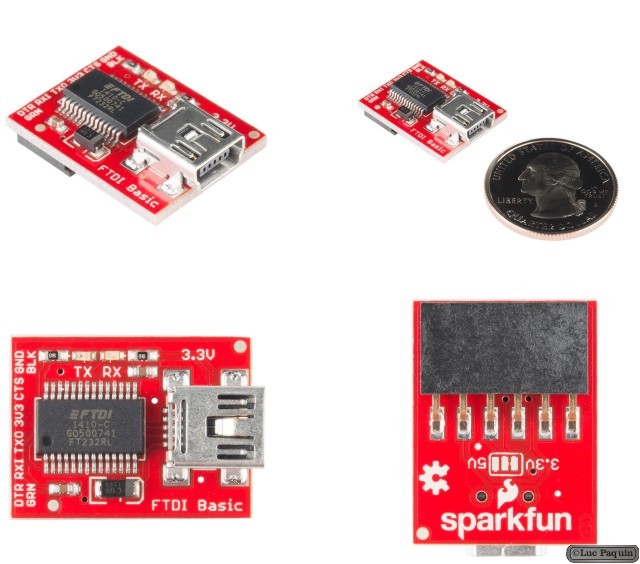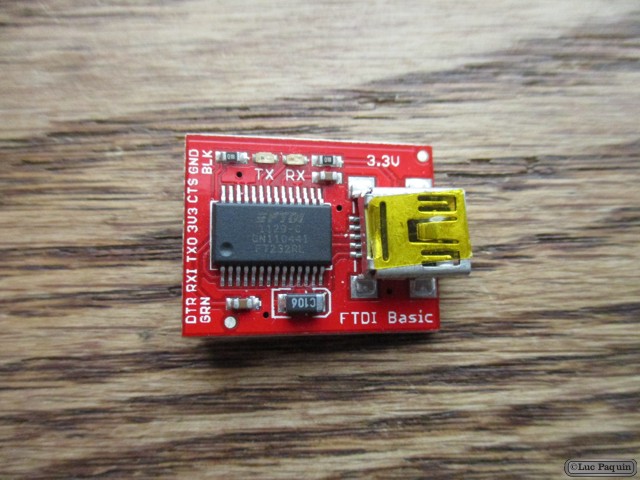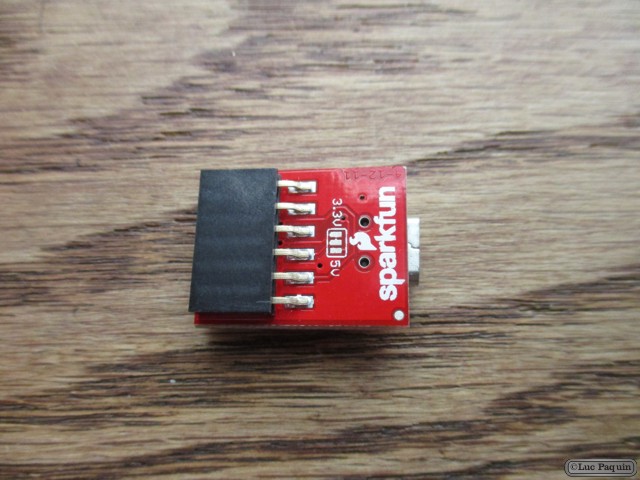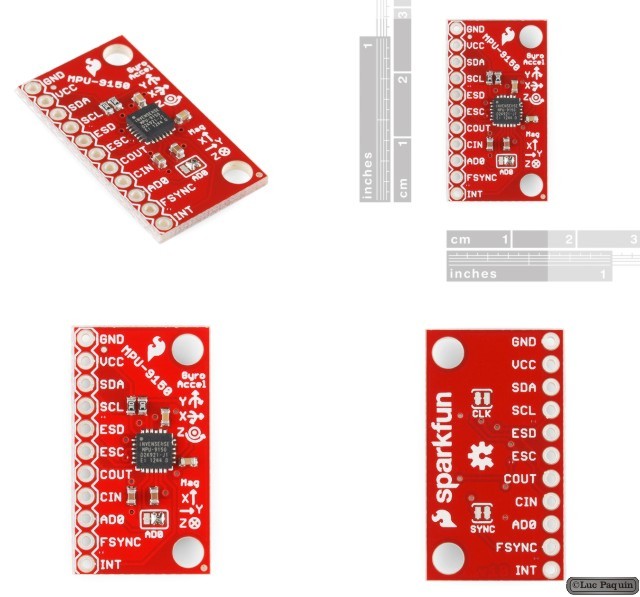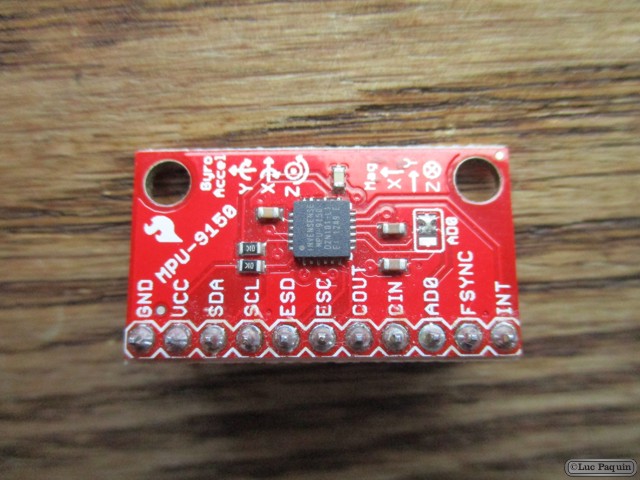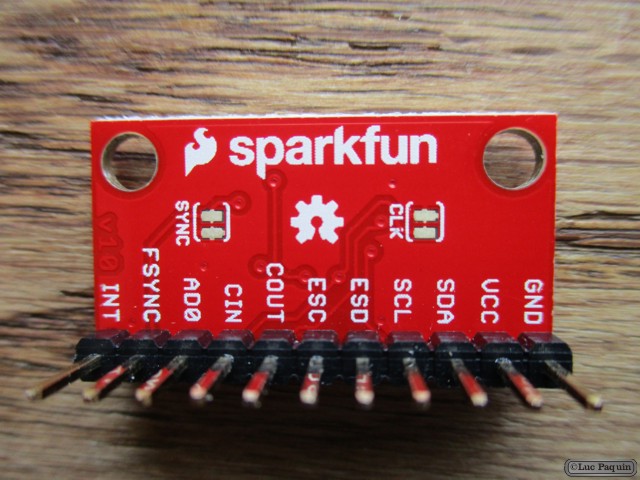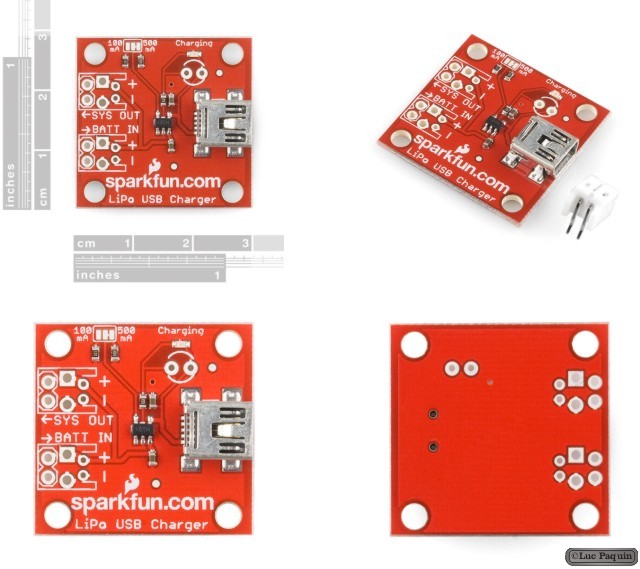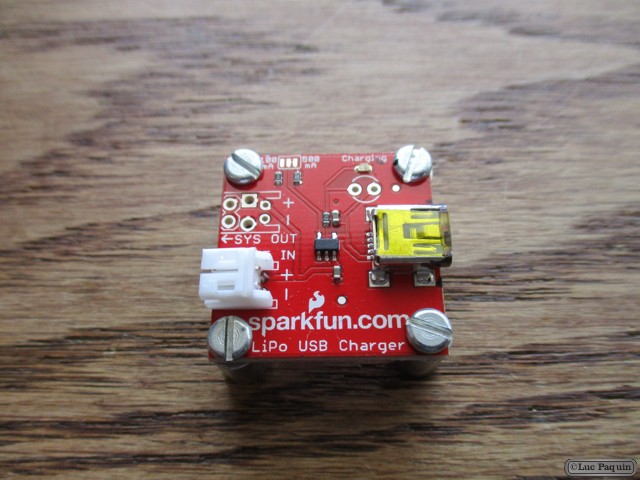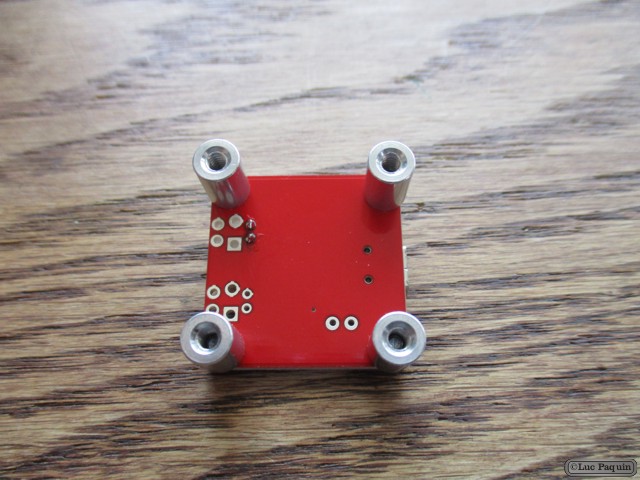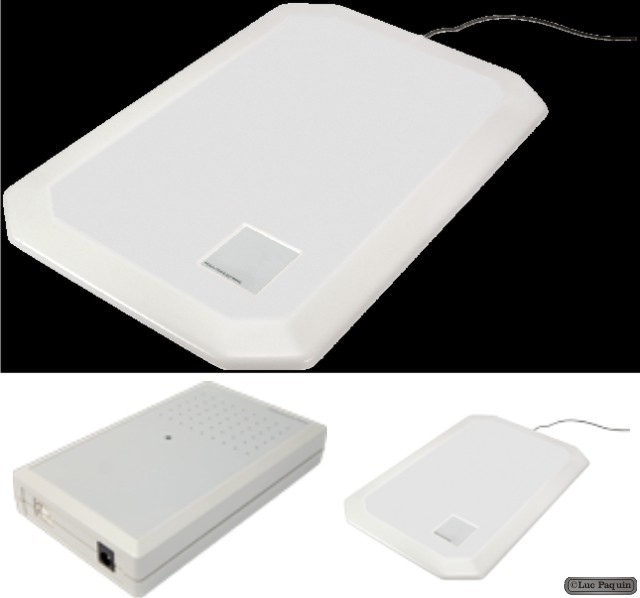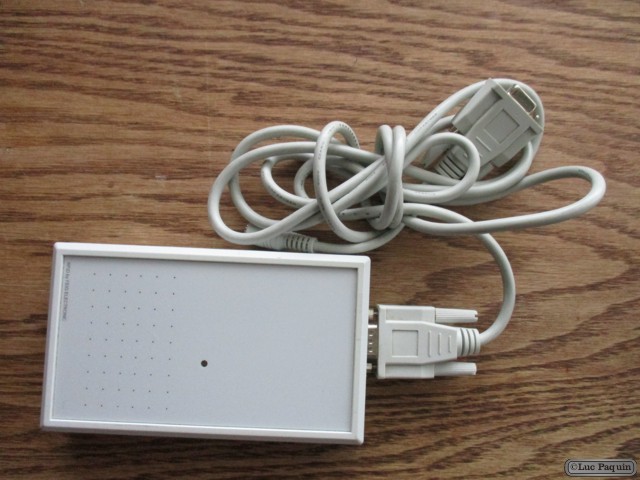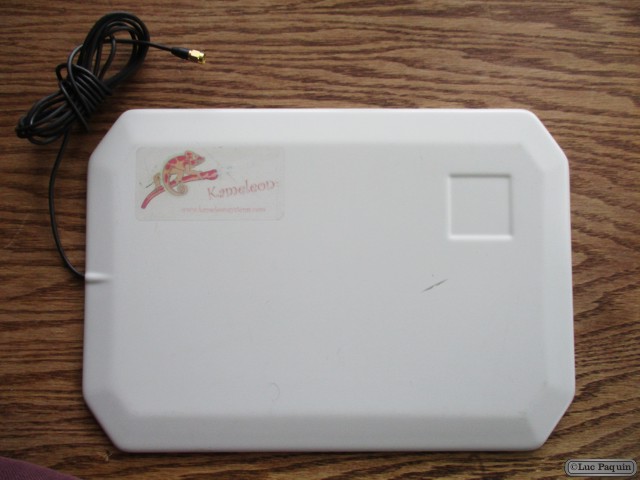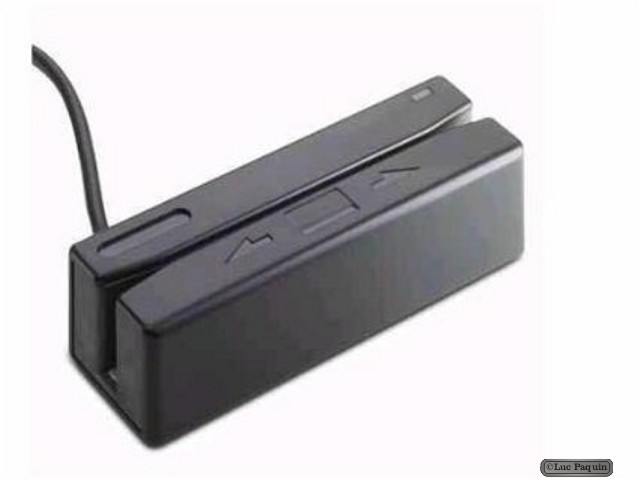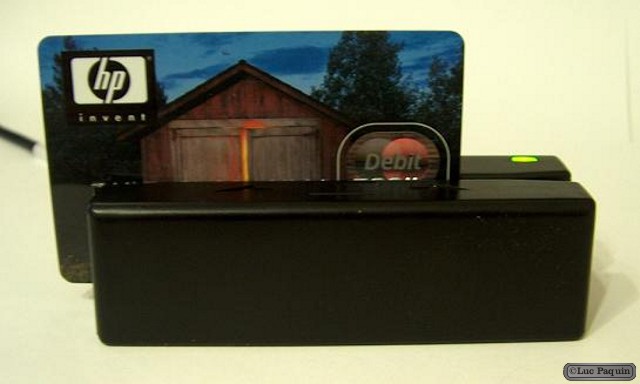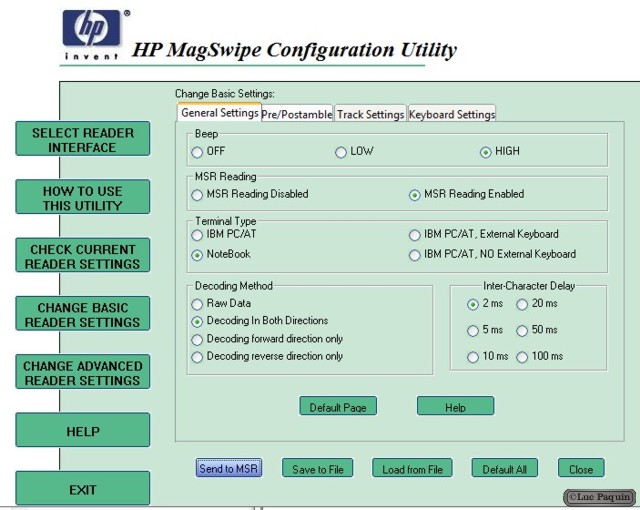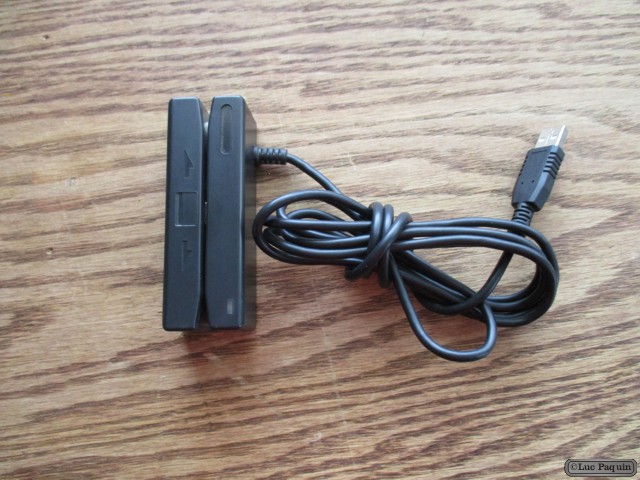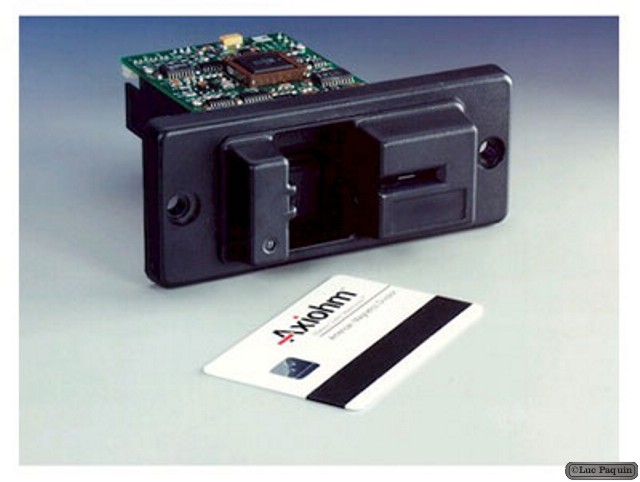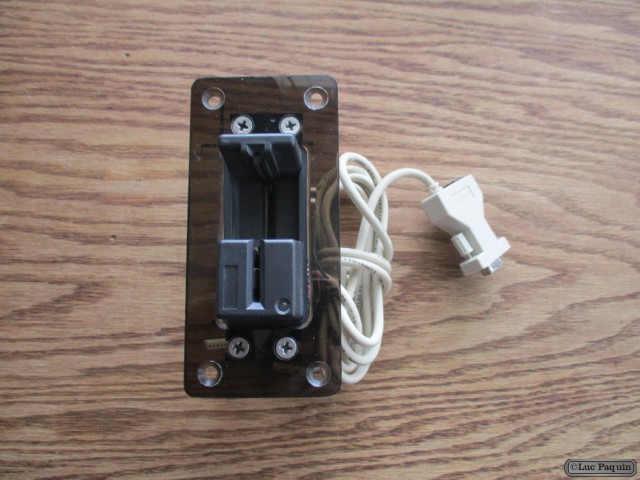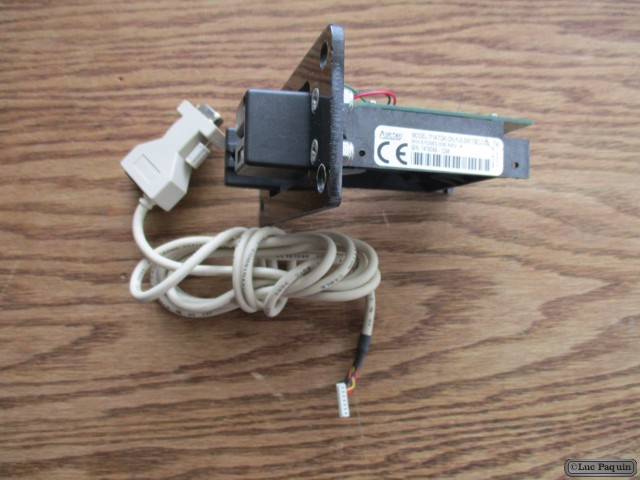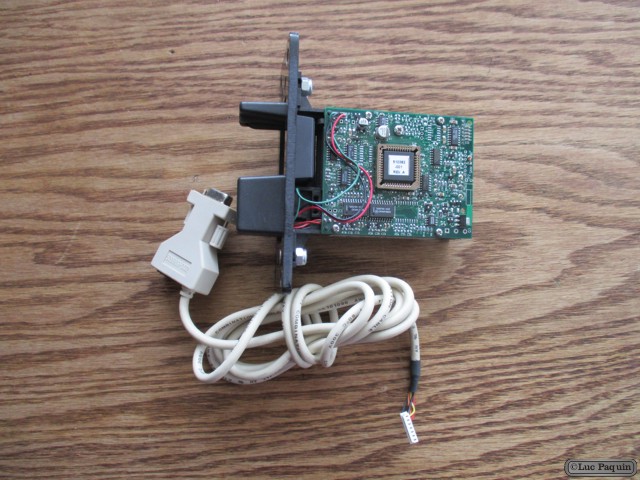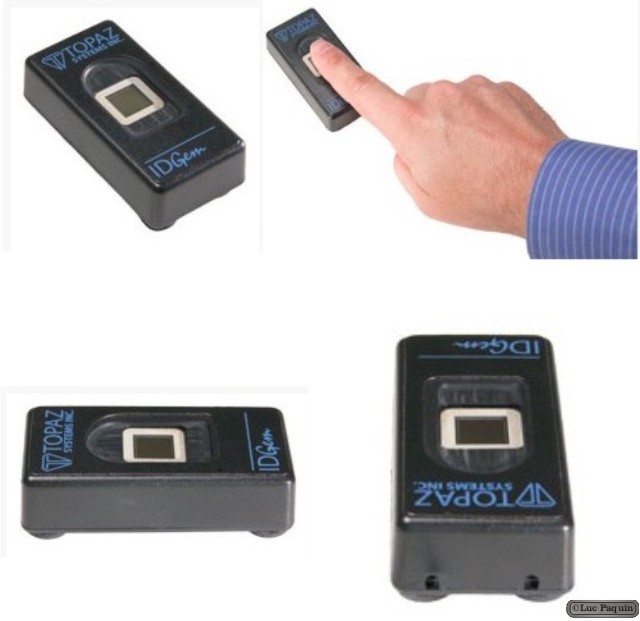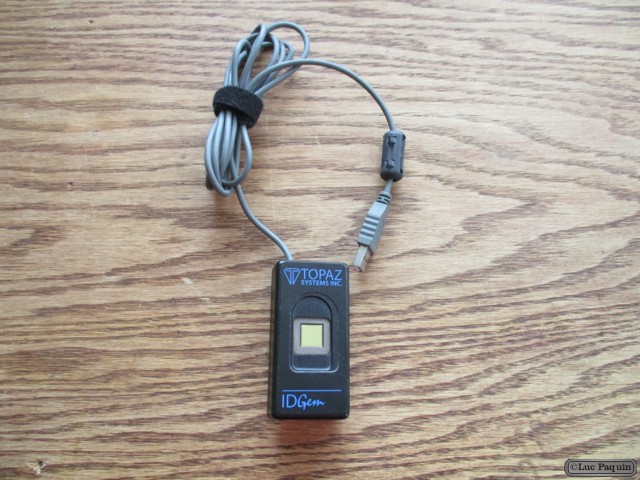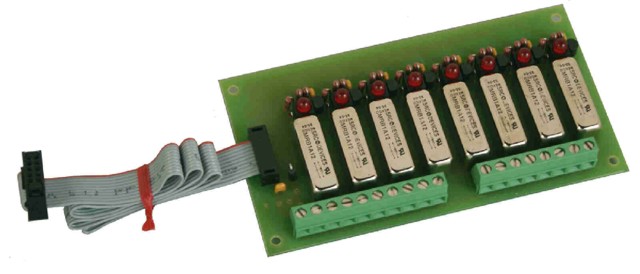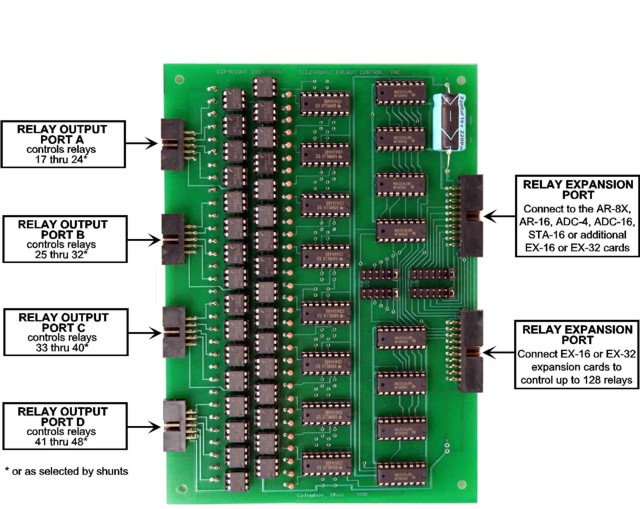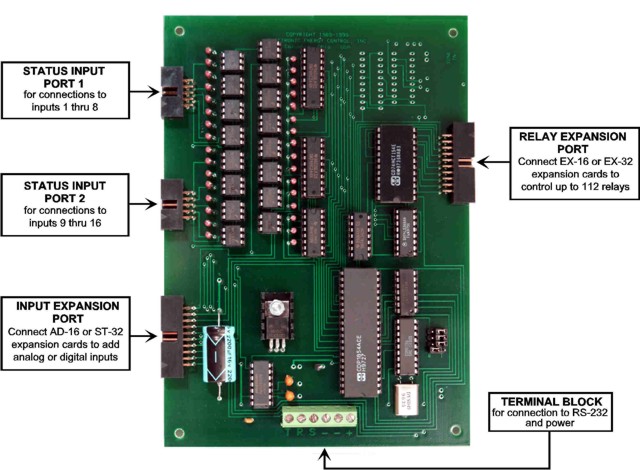DonLuc
SparkFun – FTDI Basic Breakout – 3.3V
SparkFun: DEV-09873
Description: This is the newest revision of our FTDI Basic. We now use a SMD 6-pin header on the bottom, which makes it smaller and more compact. Functionality has remained the same.
This is a basic breakout board for the FTDI FT232RL USB to serial IC. The pinout of this board matches the FTDI cable to work with official Arduino and cloned 3.3V Arduino boards. It can also be used for general serial applications. The major difference with this board is that it brings out the DTR pin as opposed to the RTS pin of the FTDI cable. The DTR pin allows an Arduino target to auto-reset when a new Sketch is downloaded. This is a really nice feature to have and allows a sketch to be downloaded without having to hit the reset button. This board will auto reset any Arduino board that has the reset pin brought out to a 6-pin connector.
The pins labeled BLK and GRN correspond to the colored wires on the FTDI cable. The black wire on the FTDI cable is GND, green is DTR. Use these BLK and GRN pins to align the FTDI basic board with your Arduino target.
There are pros and cons to the FTDI Cable vs the FTDI Basic. This board has TX and RX LEDs that allow you to actually see serial traffic on the LEDs to verify if the board is working, but this board requires a Mini-B cable. The FTDI Cable is well protected against the elements, but is large and cannot be embedded into a project as easily. The FTDI Basic uses DTR to cause a hardware reset where the FTDI cable uses the RTS signal.
This board was designed to decrease the cost of Arduino development and increase ease of use (the auto-reset feature rocks!). Our Arduino Pro and LilyPad boards use this type of connector.
Don Luc
SparkFun – 9 Degrees of Freedom Breakout – MPU-9150
SparkFun: SEN-11486
Description: The SparkFun 9DOF MPU-9150 is the world’s first 9-axis MotionTracking MEMS device designed for the low power, low cost, and high performance requirements of consumer electronics equipment including smartphones, tablets and wearable sensors. And guess what? You get to play with it.
This breakout board makes it easy to prototype with the InvenSense MPU-9150 by breaking out all the pins you need to standard 0.1″ spaced headers. The board also provides I2C pullup resistors and a solder jumper to switch the I2C address of the device.
The MPU-9150 is a System in Package (SiP) that combines two chips: the MPU-6050, which contains a 3-axis gyroscope, and 3-axis accelerometer. The part is offered in a 4x4x1mm LGA package and is upgrade-compatible with the MPU-6050 integrated 6-axis MotionTracking device, providing a simple upgrade path and making it easy to fit on space constrained boards.
Features:
- Tri-Axis angular rate sensor (gyro) with a sensitivity up to 131 LSBs/dps and a full-scale range of ±250, ±500, ±1000, and ±2000dps
- Tri-Axis accelerometer with a programmable full scale range of ±2g, ±4g, ±8g and ±16g
- Tri-axis compass with a full scale range of ±1200µT
- Reduced settling effects and sensor drift by elimination of board-level cross-axis alignment errors between accelerometer, gyroscope, and compass
- VDD Supply voltage range of 2.4V-3.46V; VLOGIC of 1.8V±5% or VDD
- Gyro operating current: 3.6mA (full power, gyro at all rates)
- Gyro + Accel operating current: 3.8mA (full power, gyro at all rates, accel at 1kHz sample rate)
- Gyro + Accel + Compass + DMP operating current: 4.25mA (full power, gyro at all rates, accel at 1kHz sample rate, compass at 8Hz rate)
- Accel low power mode operating current: 10uA at 1Hz, 20uA at 5Hz, 70uA at 20Hz, 140uA at 40Hz
- Full Chip Idle Mode Supply Current: 8µA
- 400kHz Fast Mode I²C serial host interface
- On-chip timing generator with ±1% frequency variation over full temperature range
- 10,000g shock tolerant
- I2C Pullup Resistors populated on board.
- All Pins Broken Out to Standard 0.1″ Spaced Headers
- Solder Jumper for Switching LSB of I2C Address
Don Luc
SparkFun – USB LiPoly Charger – Single Cell
SparkFun: PRT-10161
Description: If you need to charge LiPo batteries, this simple charger will do just that, and do it fast! The USB LiPo Charger is a basic charging circuit that allows you to charge 3.7V LiPo cells at a rate of 500mA or 100mA. It is designed to charge single-cell Li-Ion or Li-Polymer batteries. Check the datasheet below to see if it will work with your battery.
The board incorporates a charging circuit, status LED, selectable solder jumper for 500mA or 100mA charging current, external LED footprint, USB input, mounting holes, and various holes for your own connectors. We include a single JST-tpye connector which connects directly to our LiPo batteries. The connector comes unsoldered, so you can use it or not.
There is also a ‘SYS OUT’ which allows you to connect the charging circuit directly to your project so you don’t need to disconnect the charger each time you want to use it.
Don Luc
Feig – ID ISC.MR101 & ID ISC.ANT340/240
Feig – RFID Readers from the number 1 manufacturer
For over 40 years we have been leveraging our manufacturing and technology expertise to provide highly reliable and innovative products to our customers. In addition to our standard products, we also work with our partners to develop customized solutions to meet individual requirements. We advance the development of essential technology and markets though participation in basic research and standardization in close cooperation with universities, organizations and industrial partners. As an OEM supplier, our products are only available through the system integrator and reseller channels.
Description: ID ISC.MR101
The HF Mid Range Reader ID ISC.MR101 identifies transponders according to ISO 15693 with an operating frequency of 13,56 MHz. The reader is suitable for applications with middle read ranges. Depending on the used antenna the ID ISC.MR101 has a read range up to 40 cm.
Due to its numerous communication interfaces the HF Mid Range Reader ID ISC.MR101 is suitable to be used in fields of applications like library, retail, logistics and industry and is easy to integrate in existing systems.
With its anticollision function the ID ISC.MR101 is able to read up to 30 transponders simultaneous. A switchable DC voltage at the antenna output can supply a LED inside a connected antenna.
Depending on the interface the ID ISC.MR101 is available as module or housing version. For the housing version the electronic is mounted inside a solid plastic housing which could be used in industrial environments.
Description: ID ISC.ANT340/240
ID ISC.ANT340/240 is designed as a particularly flat external antenna for contactless data exchange with HF transponders and impresses with its excellent performance and elegant design.
These characteristics allow desktop applications in offices or libraries for file and document tracking and capturing loaned on the issue and redemption. The read range of individual transponders can be up to 30 cm.
ID ISC.ANT340/240 has a coaxial cable and can be operated with a reader, immediately.
Beside the variant with plastic housing, the product is also available as an antenna module without housing.
Don Luc
HP USB Mini MSR (Magnetic Stripe Reader)
HP USB Mini MSR (Magnetic Stripe Reader)
VERSION: 1.00 Rev. A
DESCRIPTION: This package contains the HP USB Mini MSR (Magnetic Stripe Reader) Configuration Software for the HP USB MSR point of sale (POS) accessory attached to the listed desktop models and operating systems.
Default Settings
The reader is shipped from the factory with the default settings already programmed. By default, the reader has been programmed with the least restricted settings, thus making it able to read most standard format magnetic stripe cards out of the box.
The reader’s output data format can be reconfigured to meet the expectations of the host application. To reset the reader to the factory defaults, click CHANGE BASIC READER SETTINGS. At the bottom of the screen, click DEFAULT ALL. You can confirm the reader’s settings at any time by returning to the main screen and clicking CHECK CURRENT READER SETTINGS.
Don Luc
Axiohm Model 171A
Intelligent Smart Card/Magstripe® Insert Reader/Writer
The most reliable hybrid insert reader/writer for installation in public kiosk applications. Reads/writes multiple microprocessor and memory cards.
Ideal for Public Terminals
The Model 171A units feature AMC’s vandal-resistant design, spring-loaded guide for optimum magstripe card read, and large debris slot/half-card dropout for jam-proof transactions – making them ideal for public terminals. Optional features – such as conformal coating for condensation protection, card latch and power fail latch release – make them even more robust for public settings.
Cost-effective
For cost-effectiveness, these units combine smart card read/write and magstripe read capabilities for OEM applications requiring both technologies. A smart card only version (no magstripe) is available. Plus, they are engineered to perform at least 500,000 operations. An optional LED indicator is available for user feedback.
Provides Low-Level Communications
This reader/writer provides low-level communications between host and smart card. It is ISO 7816-3 and EMV-compatible (Europay, MasterCard and Visa), and reads/writes microprocessor cards using either T=0 or T=1 protocol, and most memory cards.
Reading Options
The Model 171 is provided with an RS-232 interface. They have single, dual or triple track magstripe read capability (ISO, AAMVA, and custom). The Model 171 readers are also ISO 7816-3 compatible, and are designed to read/write today’s and tomorrow’s microprocessor and memory cards. The ability to add up to five Security Access Module (SAM) chips on an optional PCA is also available.
Don Luc
Topaz IDGem Stand Alone Unit
Topaz: F-P134-USB
The standalone fingerprint sensor features active RF-inductive technology for accurate, reliable scans of subcutaneous skin tissue.
The standalone fingerprint sensor features active RF-inductive technology for accurate, reliable scans of subcutaneous skin tissue. IDGem series pads are bundled with SigID™ biometric recognition and scoring software in addition to SigPlus.
Product Type: Hardware
Manufacturer: Topaz
Sensor Type: Active Electromagnetic
Data Interface: USB
Data, Video and Power: Direct USB
Display Type: non-LCD
Pen Type: Active Energized
Don Luc
EECI – RD-8 Reed Relay Card
EECI – EX-16 Relay Expansion Cards
Electronic Energy Control Inc
EX-16 Relay Expansion Cards
The EX-16 Relay Expansion card provides two (8) channel relay output ports (providing 16 relay output channels) per EX-16 card. The EX-32 relay expansion card provides four (8) channel relay output ports (providing 32 relay output channels) per EX-32 card. The first EX-16 or EX-32 card is connected to the relay expansion port on the AR-8X or AR-16 Relay Interface, the ADC-4 Analog to Digital Converter, the ADC-8, ADC-16 Analog to Digital Converter or the STA-8, STA-16 Status Input Interface cards. Additional EX-16 or EX-32 expansion cards plug into the preceding EX-16 or EX-32 card. The relay expansion port on the AR-16, the ADC-4/8/16 or the STA-8/16 may be expanded with up to (7) EX-16 or (4) EX-32 expansion cards (up to 128 relay outputs for the AR-16 or 112 relay outputs for the ADC-4/8/16 and STA-8/16). Relay port locations are selected with jumpers located on the EX-16 or EX-32 cards. The EX-16 or EX-32 relay output ports are identical to those on the AR-16 and provide standard right angle box headers (10 pin with .1″ centers) or optional locking right angle box headers. Relay cards, relay driver cards or the RCT-8 terminal blocks are connected directly to the EX-16 or EX-32 relay ports with the ribbon cables provided. The RC-20 ribbon cable (sold separately) is used to connect the EX-16 or EX-32 to the AR-16, the ADC-4/8/16 or the STA-8/16. The EX-16 or EX-32 may be ordered with optically isolated relay outputs to electrically isolate the EX-16 or EX-32 output signals (specify part number EX-16/C or EX-32/C). Includes technical reference, software examples and test software. Dimensions are 5″ by 7″. The EX-16 or EX-32 may be rack mounted with any of the 5″ by 7″ cards using the CH series card racks.
Don Luc
EECI – STA-16 Status Input Interface
Electronic Energy Control Inc
STA-16 – RS-232 Contact Monitor Voltage Monitor
Designed for continuous 24 hour industrial operation.
Low cost – High reliability – 15 years of proven performance in the energy management field.
In addition to use in energy management and HVAC, the STA-16 is widely used for equipment monitoring and for use as a security system interface with event logging.
Connects to RS-232.
Full technical support provided by on staff advisors.
Optional Touch Tone Input available.
Optional AC Opto Isolators available for use with the digital inputs.
Expandable up to 144 digital inputs or up to 32 analog inputs using ST-32 or AD-16 expansion cards.
Expandable to control up to 112 relays or digital outputs using EX-16 or EX-32 expansion cards.
Compatible with all versions of Windows including XP, Vista, Windows 7 and Windows 8.
Open Source – Source code examples included in Microsoft Visual Basic 6, Microsoft Visual Basic.Net, VB 2008, VB 2010, Microsoft ASP.NET, Assembly, C and others.
Includes CD with Technical Reference and Data Logging Software – Cable, terminal block and power supply sold separately.
The STA-16 Status Input Interface provides two 8 channel status input ports which allow input of on/off status information into a conventional PC for a wide variety of monitoring and signaling applications. Uses include the input of on/off status information of relays, switches, thermostats, security system motion detectors and magnetic switches, smoke detectors, heating and air conditioning equipment, air flow switches, air damper position switches, pressure switches and thousands of other devices. The STA-16 also has many applications in HVAC and home automation. The energy consumption of equipment with a constant load (lighting, resistance heating, hot water heaters, etc.) is easily computed by multiplying the time on by the equipment’s KW rating. The STA-16 is ideal for use in logging energy usage or equipment performance and is also well suited for use as a security system logger (to record times doors are opened, motion detectors tripped, alarms or other events). Other uses include the input of 8 or 16 bit binary codes for interfacing to TTL or CMOS level digital signals (allowing connection to counters, parallel data bus lines and other types of digital devices and equipment). The KY-12M Keypad may be connected directly to the STA-16 status input ports for use with security systems, door entry access, remote data entry and other uses. A modem will permit the status inputs to be monitored from a remote site (or use an Internet connection). The status information is obtained by transmitting a single byte port code to the STA-16. The STA-16 then transmits back a single byte code with each bit representing the 8 inputs on that port. The status inputs are turned on by applying a small current (6 ma typical) to the LED inside the opto coupler on the STA-16 (minimum 1.5 volts required, common cathode). Optional AC opto couplers are available which will turn on in both directions, allowing for both common cathode and common anode configurations. The input voltage range defaults to a 6 to 18 volt range with a 1.8 K series resistor to the LED (the STA-16 may be ordered with other resistor values or with no resistors by specifying the /M option). The STA-16 Status Input Interface provides a relay expansion port to control up to 112 relays (using EX-16 or EX-32 relay expansion cards) and an input expansion port which allows for expansion to 144 status inputs or 32 analog inputs (using ST-32, AD-16 or AD-32 expansion cards). An optional Touch Tone input is also available. Includes technical reference, software examples and STA-16 Data Acquisition Software for Windows (for use with Windows versions 3.0, 3.1, Windows 95, 98, 2000, ME, NT, XP, Vista and Windows 7, 8). Software is also provided that allow the STA-16 inputs and/or relays to be controlled or monitored over a network (LAN, Internet, etc.).
Don Luc
